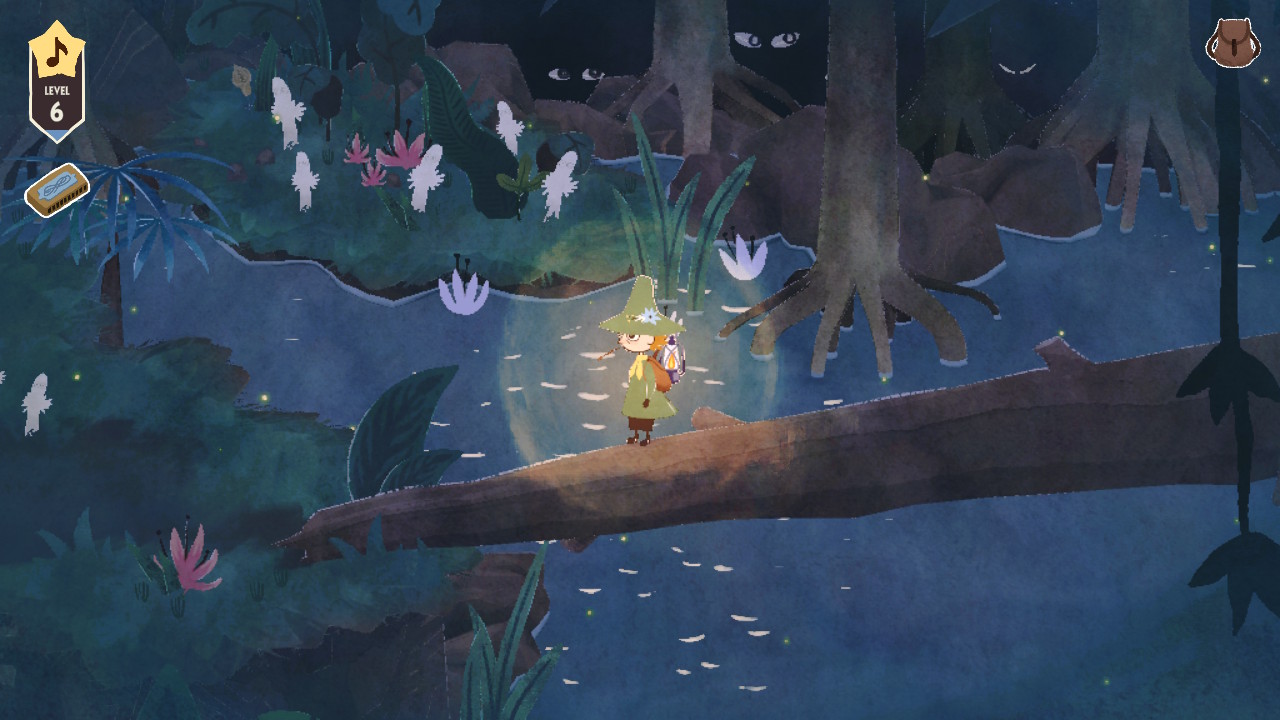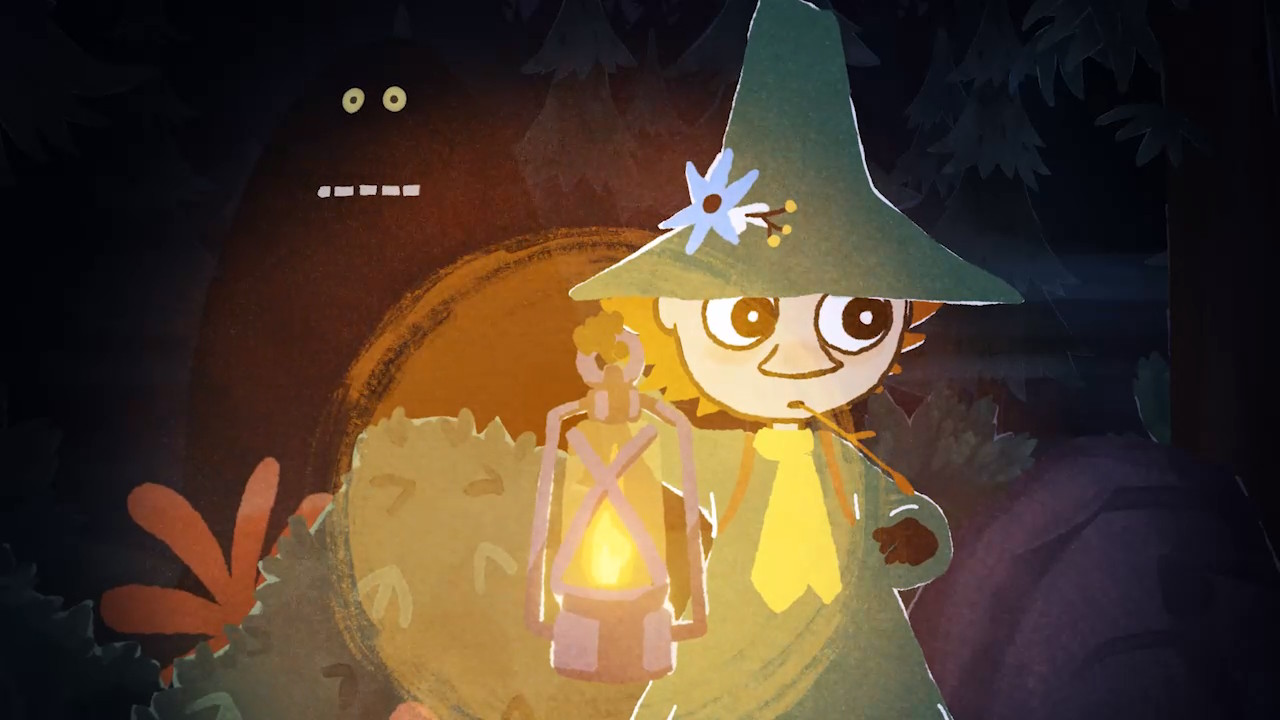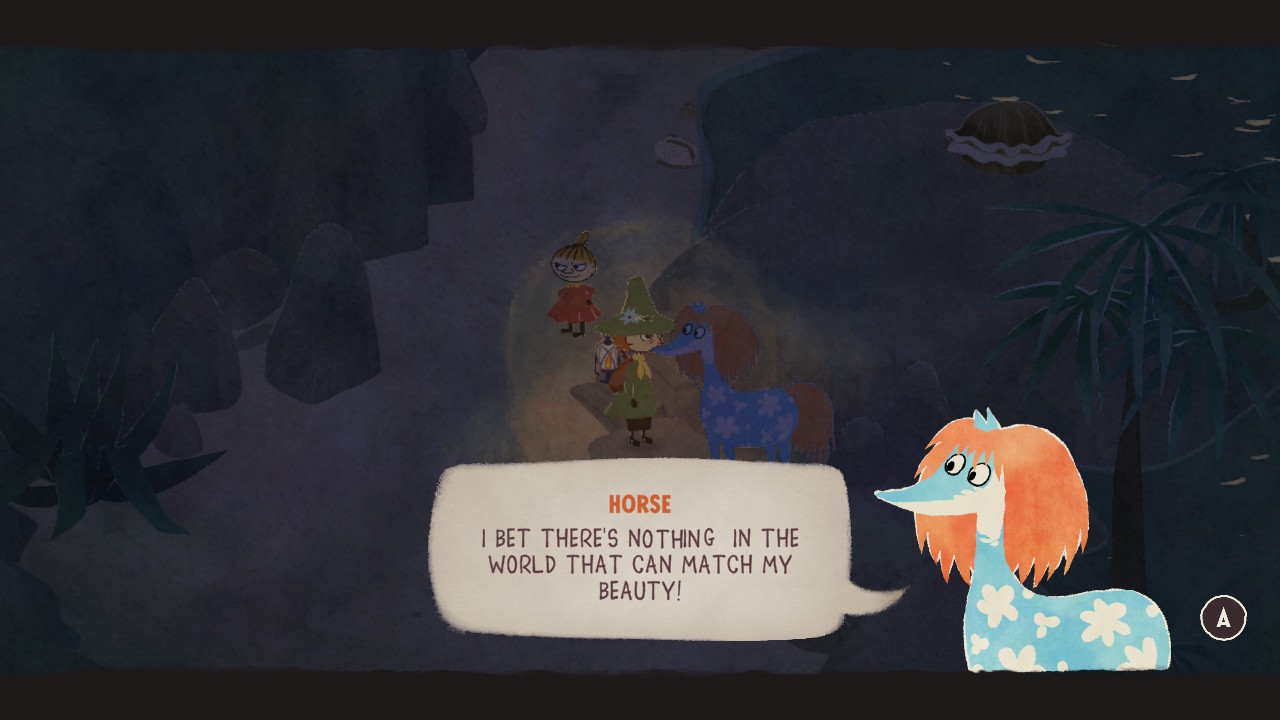System: Switch
Release date: March 7, 2024
Developer: Hyper Games
Publisher: Raw Fury
Finding out that The Moomins is not only still an active franchise but is in fact still doing quite well for itself is one of the more surprising things that has happened to me this year thus far. As a child of the 90s I have fond memories of The Moomins (both the novels and the 1990s TV series) and I was eager to revisit that world in Snufkin: Melody of Moominvalley, which appeared to capture the essence of Tove Jansson’s original works perfectly through its beautiful hand-drawn art style and relaxed, adventure-focused gameplay with a melodic twist that complemented the titular Snufkin. The “cozy gaming” space is packed with top quality titles at this point, and although I couldn’t necessarily recommend Snufkin over some others to those without that sense of nostalgia that drew me to it on the basis of its gameplay, it is nonetheless a title I find difficult to fault and would urge people to pick up as few are as immersive or charming as this one.
Melody of Moominvalley begins with Snufkin, our titular protagonist and playable character, saying farewell to Moomintroll, promising to return to Moominvalley in the spring and meet his friend again at their usual spot. This is a promise that, after a long and hard winter, he is able to keep, but Moomintroll is not. As Snufkin returns, he finds that Moominvalley is not as he left it: signs have appeared across the land, and the Warden has also erected numerous gardens, spoiling the natural beauty of the landscape. Needless to say, nobody is particularly impressed by this, but Moominvalley is not a place of violence, and with a seemingly endless army of constables to enforce his rules, nobody is going to argue with the Warden. Nobody, that is, apart from Moomintroll, who has seemingly vanished and may or may not be in danger. So it is up to the returned Snufkin to find his friend to resolve the conflict with the Warden and to restore Moominvalley to the natural beauty that it has always been.


From the moment you arrive back at Moominvalley to the very end of the game you are given just enough of a reason to continue forward with this narrative, but you are never pushed in a specific direction with any sense of urgency: as Snufkin you are free to wander where you will, your progress hindered only by the environment itself, with some pathways inaccessible until you have the required abilities to clear them. Despite the linear storytelling, the path that you’ll take to get to the end is often anything but, and you’ll find numerous diversions leading you away from that objective as you progress. The central conflict often isn’t the focus of what you will be doing in the game, and just as much care and attention is given to the other residents of Moominvalley that you’ll encounter along the way as there is to Snufkin and his goal of finding Moomintroll.
To me this made the game feel almost episodic as the various residents of Moominvalley that you’ll encounter (all characters that those who are familiar with the franchise will recognise, of course) have their own concerns and problems that only Snufkin can assist them with. While a few of these will serve as obstacles that you’ll need to clear (there is one particularly long segment where you’ll need to work with Little My later in the story to progress, for example) to advance the story, many of them are optional side quests, serving almost as miniature character arcs for the residents, who have all been impacted by the actions of the Warden to varying degrees. Or, in a few cases, remain entirely oblivious and uncaring to it and just want to get on with their lives.


Despite there being no real “reward” for sidequests in the traditional sense (i.e. a new ability, currency, or something that would otherwise aid in progression) I found myself actively completing them when they appeared, and eagerly anticipating the next one. With the exception of one at the very end of the game, all of them could be easily accomplished simply by exploring in the general direction of the next story objective, and the dialogue was a delightful mixture of witty, philosophical, and occasionally melancholy. Each character has their own distinct personality that is extremely well communicated in their interaction with Snufkin despite being mostly limited to one or two short interactions, and each adds to Snufkin’s character as well as he interacts with them differently depending on the request: he’ll volunteer to help, be coerced into running errands, and have longer discussions that result in him resolving to offer aid. Most of these quests are unfortunately little more than fetch quests, with the only variety being the type of item you need to find and the way in which you’ll obtain it, but the dialogue adds a depth and personality to the world and its inhabitants that would otherwise be completely absent if you passed these by.
At its core Melody of Moominvalley is an adventure title, prioritizing freedom of exploration, but environmental puzzles play a key part in this. Snufkin can perform rudimentary variants of the basic platforming activities; he can run for a limited time, jump small gaps, and push or pull objects, but the more interesting and creative elements of the gameplay come from the three musical instruments that he can play. Initially limited to only one, with a further two being unlocked later as part of the story, these instruments will directly affect the environment in places and serve as the key tools that you’ll utilize in order to progress. You may need to charm an animal so that you can ride it, use it as a platform, or fetch an out of reach item, for example. Vibration might be used to dislodge boulders, or shake apart seemingly impassable mountains of dirt. There are numerous such elements scattered around Moominvalley for Snufkin to tackle, each with their own inspiration level requirement; inspiration will be gained the more you explore and use your abilities to help the residents. Despite my initial concern of being unable to progress due to the slow rate at which you gain inspiration, I maxxed this out long before reaching the end of the game, and instruments fortunately all share the same inspiration level, so I never found myself stuck needing to grind it out by disturbing patches of grass or aimlessly playing the instruments to see if anything dropped a few notes. It’s a unique and creative way to puzzle-solving that is never overly taxing and offers plenty of variety despite the occasional repetition in puzzles: you’ll be charming birds out of trees more than a handful of times over the course of your journey.


The stealth-based sections are a little less relaxed in nature, as you infiltrate one of the Warden’s many labyrinthine gardens, weaving your way past the watchful eyes of the guards patrolling the area to uproot the numerous signs scattered around. You’ll mostly be moving objects to block a guard’s line of sight or using your flute to disturb caged animals to distract them so that you can safely sneak by, during these. I found them a welcome change of pace from the usual sedate exploration, which also brought the focus back to the main objective of the game and pushed the story forward. Uprooting all the signs in the garden will see the guards disperse and nature reclaim the area, allowing you to progress to the next area and one step closer to your goal of finding Moomintroll and undoing the damage the Warden has done to Moominvalley. It’s a satisfying little slice of non-violent environmental activism that perfectly fits the tone of the franchise, ups the tension to keep things engaging, and still remains accessible for younger players: patrol patterns are straightforward and checkpoints are quite generously spaced in each garden even though each one is relatively short. If worse comes to worst you can always run right past the guards too, as they will eventually stop chasing you and although Snufkin’s stamina bar is quite limited, it’s generally enough to get you past most obstacles, and signs will remain removed even if you’re caught.
The map is unfortunately quite unhelpful and the only real complaint I have with exploration: it gives you a general idea of where you are and the location of points of interest such as story objectives, but not how to get there or, more importantly, what might be standing in your way. It makes exploration more tedious than it needs to be at times, as I often had to take very roundabout routes to get somewhere after attempting to follow the misleading map terrain: it serves as more of an illustration to give you an idea of where you are in relation to everything else than a guide. This makes exploration a more natural and discovery-led process, and although the game is mostly linear there are times when it strays into being a little obtuse, slowing down the pacing slightly in a more intrusive fashion. Highlighting a quest marker will give you an on-screen arrow that will point you in the general direction of where you need to go, but unfortunately this doesn’t take terrain into account either, and following it is just as likely to lead you to an impassable wall of trees or a ditch. For better or worse, Melody of Moominvalley is a game where you are best off exploring at your own pace, which may at times lead to a few stumbles.
However, exploration of Moominvalley is heightened significantly by the visuals: the hand-drawn art style perfectly emulates Tove Jansson’s illustrations and make the game feel very much like an animated novel. Backgrounds are clean and beautifully detailed, and there is a fantastic amount of variety in the areas you’ll explore, with some particularly impressive and atmospheric lighting effects coming to play later when you explore the caves of a nearby island, and during the sequences that take place at night. The only slight blemish here comes from playing in handheld mode, where the white outline surrounding Snufkin can, at times, appear a little unpleasantly jagged in motion. The frame rate also isn’t as smooth as it could be at points, with one or two instances suffering from a noticeable lag, but this doesn’t render the game unplayable or detract from the visuals in any lasting fashion, only serving to make those instances only slightly less comfortable. Your adventures across Moominvalley are complemented by a suitably relaxing ambient soundtrack that is never overly intrusive, often only becoming a noticeable presence during more emotionally charged moments in the story.
The Verdict


Snufkin: Melody of Moominvalley might not stand out if you don’t have a lingering sense of nostalgia for the franchise as its gameplay is quite basic and during extended play sessions can become repetitive. Its short runtime of around five hours may also leave some players feeling unsatisfied since it ends quite abruptly and has a narrative structure that relies quite heavily on your engagement with the side stories you’ll encounter along the way to your ultimate destination. But even though this might not be to everyone’s taste, this is still a game I’d wholeheartedly recommend – with its beautiful hand-drawn art style, captivating cast of characters who often offer thought-provoking (or at least entertaining) dialogue, and surprisingly satisfying mix of music-based environmental puzzles and light stealth gameplay, it’s a unique and charming experience. If you’ve been to Moominvalley before, you’ll find it to be just as you remember it, and if you’ve never been before, this is the perfect time to visit.
Snufkin: Melody of Moominvalley copy provided by the publisher for the purposes of this review.
Related
- SEO Powered Content & PR Distribution. Get Amplified Today.
- PlatoData.Network Vertical Generative Ai. Empower Yourself. Access Here.
- PlatoAiStream. Web3 Intelligence. Knowledge Amplified. Access Here.
- PlatoESG. Carbon, CleanTech, Energy, Environment, Solar, Waste Management. Access Here.
- PlatoHealth. Biotech and Clinical Trials Intelligence. Access Here.
- Source: https://nintendoeverything.com/review-snufkin-melody-of-moominvalley/



